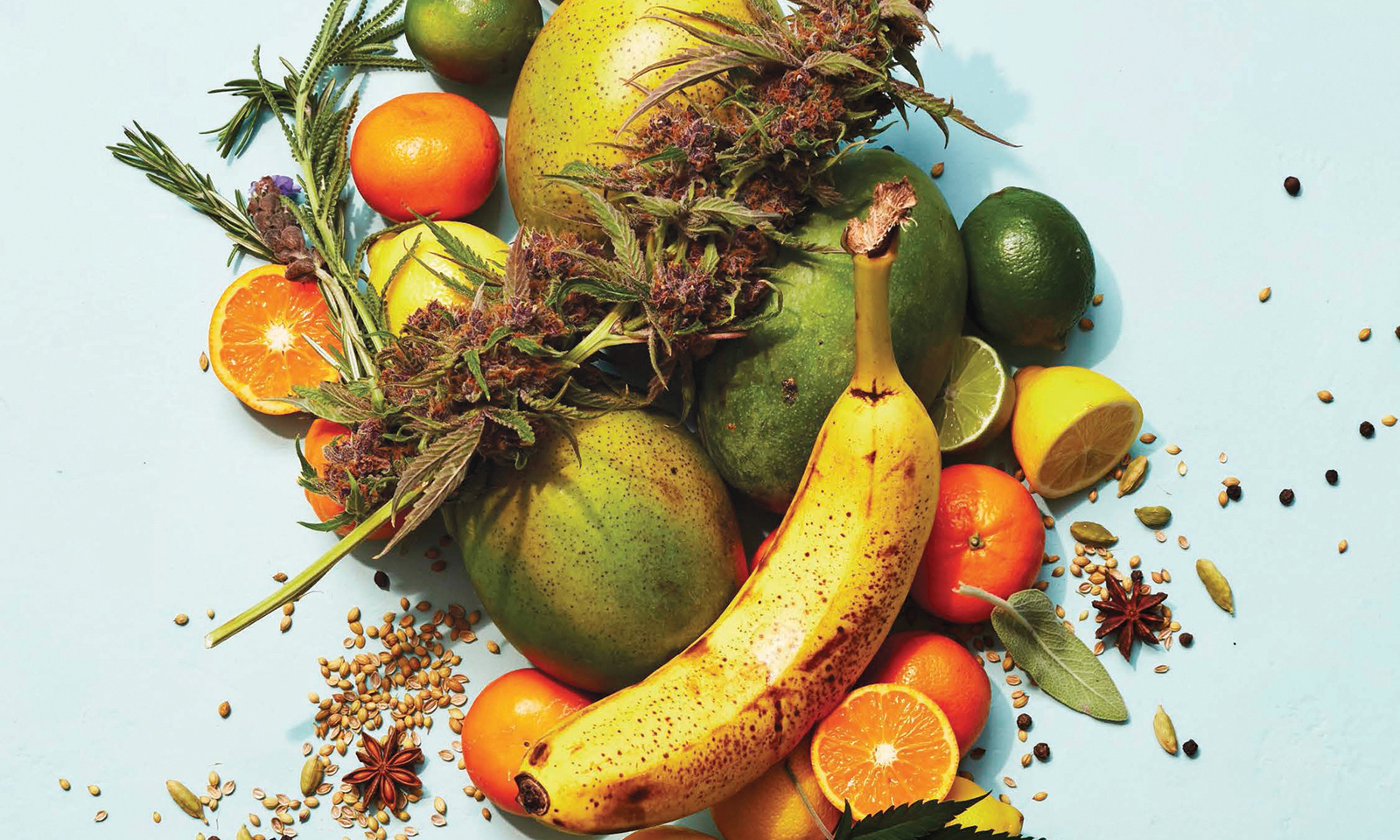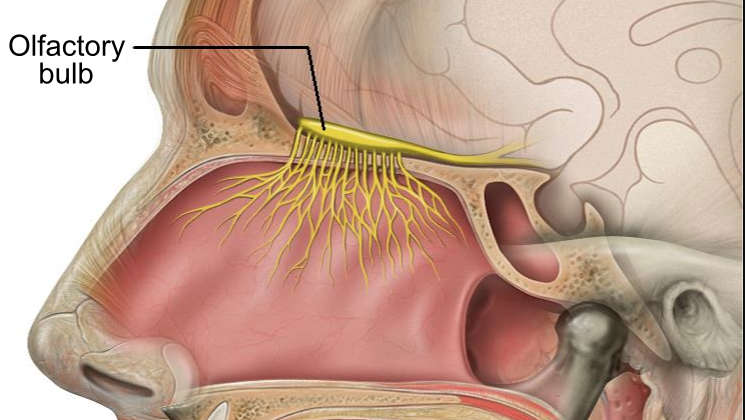Why Does Weed Make You Feel So Hungry?

The infamous munchies are a result of several separate mechanisms that band together in unison to invoke cannabis-induced famine.
One of these mechanisms is responsible for making everything smell tastier, another makes us crave candy and junk food, and these two separate processes trick us into being hungry even if we’re full.
This is a pretty complex topic, but I’m sure many of you would like to know more, so I’ll try to break it up into interesting, easy-to-understand sections.
The Olfactory Bulb

Despite sounding like an old factory light bulb, the olfactory bulb is actually an important segment of the brain closely involved in olfaction, a process that forms our sense of smell.
An animal study from 2014 (1) showed that after cannabis use, tetrahydrocannabinol (THC) molecules attach to the cellular receptors of the olfactory bulb.
When this happens, sensitivity to smell becomes enhanced, which intensifies fragrances and aromas.
The sense of smell is intricately connected to our sense of taste, contributing to the overall pleasure of eating. With intensified aromas our perception of flavor increases, making food much more delicious than it objectively is.
Dopamine and lowered inhibitions
One of the innumerable effects of THC is that it increases dopamine levels.
In this regard weed is quite similar to alcohol, as both substances increase dopamine and lower our inhibitions.
Related to cannabis-induced hunger, lowered inhibitions caused by a dopamine spike usually lead to some very questionable food choices.
This effect leads us to ferociously gorge on something we otherwise wouldn’t be caught dead eating, and of course intensely regretting it later on.
The inability to say no to ourselves is the number one reason why people despise munchies.

The Ghrelin hormone
In a 2018 animal study (3) researchers exposed rats to precise doses of cannabis vapor, and closely observed their eating habits.
They found that THC triggers a surge of ghrelin, which is a hormone responsible for informing the brain that an organism is hungry, directly influencing it to search for food.
Results of the research showed that THC haywires appetite circuits, causing the animals to experience hunger, even if they had a full meal prior to the cannabis doses.
This study utterly substantiates what humans go through when they are intoxicated with cannabis.
POMC neurons
The final research (4) related to cannabis and hunger is from 2015, and it discovered that specific neuron cells in the hypothalamus switch their function while under the influence of weed.
Hypothalamus is a region of the brain primarily responsible for connecting the nervous system with the endocrine system, and it plays a role in hunger, thirst, body temperature, sleep, circadian rhythm and so forth.
The animal study found that POMC (hypothalamic pro-opiomelanocortin) neurons, which are normally responsible for the sensation of satiety, change their function because of cannabis, and are now responsible for the sensation of hunger.
This happens because POMC neurons normally secrete a compound called alpha-MSH (alpha-melanocyte-stimulating hormone), which promotes the sensation of being full.
But, POMC neurons under the influence of cannabis secrete a different compound called beta-endorphin, which stimulates appetite.
Beta-endorphin (just like ghrelin) directly causes hunger, no matter how full someone was before using cannabis.
Tetrahydrocannabivarin
Unlike regular high-THC cannabis, strains that possess high levels of THCV (tetrahydrocannabivarin) can actually diminish appetite.
This minor cannabinoid is capable of suppressing food cravings, so if you’re in a position to acquire products that are rich in THCV, you can utilize them to counteract the munchies induced by THC.
Therapeutic significance
Most recreational users very likely consider weed-inspired hunger a nuisance, and some might even regard it as a pressing issue.
But for certain medical cannabis users (most notably cancer and HIV patients) appetite stimulation caused by weed is immensely beneficial, as their illnesses or conventional therapies dangerously decrease their desire and ability to eat.
References:
- Edgar Soria-Gómez, Luigi Bellocchio, Giovanni Marsicano; The endocannabinoid system controls food intake via olfactory processes; 2014
- Michael A P Bloomfield, Abhishekh H Ashok, Nora D Volkow, Oliver D Howes; The effects of Δ9-tetrahydrocannabinol on the dopamine system; 2016
- JF Davis, PQ Choi, J Kunze, P Wahl; Investigating the Neuroendocrine and Behavioral Controls of Cannabis-Induced Feeding Behavior; 2018
- Marco Koch, Luis Varela, Jae Geun Kim1, Jung Dae Kim, Francisco Hernandez-Nuno, Stephanie E. Simonds, Carlos M. Castorena, Claudia R. Vianna, Joel K. Elmquist, Yury M. Morozov, Pasko Rakic,7, Ingo Bechmann, Michael A. Cowley, Klara Szigeti-Buck, Marcelo O. Dietrich, Xiao-Bing Gao, Sabrina Diano & Tamas L. Horvath; Hypothalamic POMC neurons promote cannabinoid-induced feeding; 2015
420 Intel is Your Source for Marijuana News
420 Intel Canada is your leading news source for the Canadian cannabis industry. Get the latest updates on Canadian cannabis stocks and developments on how Canada continues to be a major player in the worldwide recreational and medical cannabis industry.
420 Intel Canada is the Canadian Industry news outlet that will keep you updated on how these Canadian developments in recreational and medical marijuana will impact the country and the world. Our commitment is to bring you the most important cannabis news stories from across Canada every day of the week.
Marijuana industry news is a constant endeavor with new developments each day. For marijuana news across the True North, 420 Intel Canada promises to bring you quality, Canadian, cannabis industry news.
You can get 420 Intel news delivered directly to your inbox by signing up for our daily marijuana news, ensuring you’re always kept up to date on the ever-changing cannabis industry. To stay even better informed about marijuana legalization news follow us on Twitter, Facebook and LinkedIn.




